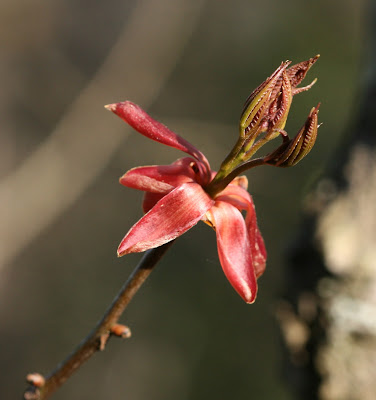Cold Is A Welcome Visitor
This seems to be a colder winter here than most. Nearly a month ago now, our temperatures dipped slightly below freezing for 2 consecutive nights and periously close to that on another. The surface water on my bird bath froze and I had to bring in my collection of non-native orchids. Across the world of social media, folks here in Florida bemoaned the destructive force of a hard freeze (or even a frost) on the plants in their landscape. Perhaps, I am just simply eccentric, but I welcome this kind of weather to my landscape. Cold is one of the most important abiotic forces to a Florida landscape. It resets the table and cleans up the clutter.
Florida is different from other places where I've lived. Our weather patterns are certainly not uniform and that greatly impacts the types and species of plants that naturally occur here. As a big, somewhat open-toed sock, plants naturally stream southward down from the states along our open border. At the same time, tropical plants sail across the open sea from the Caribbean, squeeze through the open toe of our sock and start to climb upward. We are a constant battleground here and north meets south somewhere here in central Florida. Plants may be Florida natives, but its important to know where in this state they are native to. Cold sorts those things out.
My landscape is full of north Florida plants - mostly because I love them best. Understory trees such as downy serviceberry (Amelanchier arborea), littlehip haw (Crataegus spathulata), and silky camelia (Stewartia malacodendron) as well as shrubs such as my native azaleas (Rhododendron spp.) do not occur here naturally, but they grow well here in the conditions I have placed them in. They do not flower nearly as well, however, without a blast of cold weather and, thus, they do not fruit as well either. My northern plants generally have not made their way south naturally because their reproduction requires cold. When they do not get it, they grow if purposely planted, but they don't reproduce. Most produce seed that requires cold to germinate. If that wasn't the case, we'd have these species much further south in Florida than we do. This coming spring, I expect that these north Florida natives will reward me with more flowers than normal. The seeds, however, won't sprout across my neighborhood.
At the bottom of Florida's sock are tropical species that can either tolerate minimal cold (temperatures down to the mid-20's F) or cannot tolerate a freeze at all. I've grown a great many south Florida natives here in central Florida over the past 3 decades because they are beautiful and because many provide significant benefits to wildlife. Birds feeding on the fruit of a great many carry seeds north during migration. I once had a satinleaf (Chrysophyllum oliviforme) sprout up next to a bird bath here in Pinellas County; the obvious result of bird migration. It flourished for about a year and then died at the first hard freeze. Plants like these would overrun the species native to my part of the state without a solid freeze.
Florida's vegetation pattern looks the way it does because of cold. If we are engaged in planting natives for their ecological benefit, we recognize that. We don't scurry around our plantings covering up species that have no business here nor do we worry about what a freeze might do. We let it work its natural magic and understand that the natural areas around us welcome it and will prosper because of its arrival. A good freeze resets the table.




I enjoy the 'colder' months, but, as you say, winter isn't predictable here so more southerly plants can't be relied upon to show well all year round or even survive. People generally think of Florida as tropical, which if we live here we know isn't the case over all the state. But it doesn't stop some of us from loving and growing more tropical, exotic plant material outside of our hottest areas. Maybe a few more erratically cold winters will change some minds.
ReplyDeleteOn the other hand, warming weather due to climate change suggests there will inevitably be changes in our native plant species' ranges. Although it's absolutely beyond me to try to understand the time scale involved and the overall complexity of the situation, I hope it won't mean complete disruption of ecosystems because of rising temperatures - at least in my lifetime. Which sounds rather selfish, but in the longer term I fear we are in a world of trouble.
I'm not sure I recognize the plant in your picture - is it red buckeye?
I think the plant is a hickory. My guess Carya tomentosa because that's what I've seen them do here.
DeleteFormer central coast of Florida and south Florida resident, it's still taken me a decade + of getting used to north Houston growing. Where we battle extreme heat and in recent years, strange deep freezes, and the back to a mild winter right after. Unfortunately the whiplash only holds the exotics at bay for a few years until they take off once again. We're on the same latitude as about Lake City (my particular location of this area) and thus we are very similar in winter but probably more freezes than they would get. Erratic winters are really having me rethink plants more than our hot summers do.
Misti- Yes, the photo is of a pignut hickory bud, leafing out. Thanks for reading this post and for commenting.
Delete